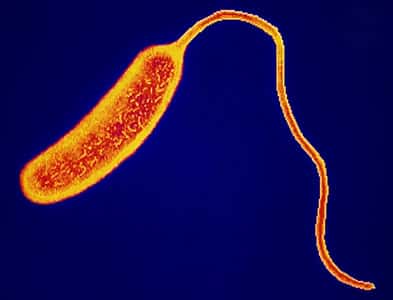In a fast paced and ever changing society such as today’s, it may not be clear to most the important role that history plays in the  understanding of current events. However, without a good understanding of events from the past, it is hard to understand the significance that a current even possesses. This relationship can also be reversed in that an understanding of current events can shed new light on things from the past. An article from The New York Times illustrates how society’s problem with the frequency of Cystic Fibrosis can be linked to the devastating effects of the cholera epidemics of the 19th century. Through an analysis of this article and how it links to the events of history, it can be shown that both current and historical events must be understood to truly understand all aspects of a problem that is faced by society, and how science, politics, and culture are interconnected through this relationship.
understanding of current events. However, without a good understanding of events from the past, it is hard to understand the significance that a current even possesses. This relationship can also be reversed in that an understanding of current events can shed new light on things from the past. An article from The New York Times illustrates how society’s problem with the frequency of Cystic Fibrosis can be linked to the devastating effects of the cholera epidemics of the 19th century. Through an analysis of this article and how it links to the events of history, it can be shown that both current and historical events must be understood to truly understand all aspects of a problem that is faced by society, and how science, politics, and culture are interconnected through this relationship.
In the article “Clue to Why Cystic Fibrosis has Survived” it is argued that the reason the gene for Cystic Fibrosis has survived for so long is that during the cholera outbreaks it offered an advantage to people that carried this gene. Normally when a gene codes for a lethal disorder, it slowly disappears from the population because people do not survive long enough to pass on the gene. However, with Cystic Fibrosis, it has survived for hundreds of years. Having only one copy of the gene does not lead to development of the disease, a person must inherit two copies of the gene to develop the disorder. Scientist Dr. Gabriel interviewed in the article, states that the reason why a gene survives time is because it offers some advantage to the person who possesses it. This means that the Cystic Fibrosis gene must offer an advantage in order for it to have survived so many years. This advantage is the fact that people with the Cystic Fibrosis gene are better able to survive cholera, a disease that kills by expelling all water from the body. This is done by stopping the cholera bacteria from being able to cause diarrhea. Therefore having one copy of this gene would allow the possessor to survive a cholera outbreak, but having two copies of the gene would cause the development of Cystic Fibrosis.
Cholera is caused by a bacterium that lines the insides of the intestines, multiplying into the millions, which causes the body to expel  huge amounts of water in the form of diarrhea. If untreated, this will cause death within forty-eight hours of infection. Cholera can be contracted by drinking contaminated water. In rapidly expanding cities during the time of the industrial revolution, sewage was a huge problem. Waste piled up in the cities as there was no working system to remove it as more and more people moved to cities. In London, Edwin Chadwick ordered people to dump their waste into the Thames River as a means of getting rid of the massive sewage problem. This river however was a major source of drinking water for many residents of the city. This caused cholera to spread rapidly throughout parts of the city, causing the deaths of thousands. It was a mystery to scientists of the time how the disease was spread and why only certain parts of the city were affected by this problem, or why some people living in an affected area were not getting the disease. The leading theory of the time was that the disease was caused by miasma, or polluted air because no germ theory existed at the time. Eventually two people, Henry White and John Snow, realized that cholera outbreaks were centralized around water pumps and had the source of the disease shut down and the instance of the disease decreased.
huge amounts of water in the form of diarrhea. If untreated, this will cause death within forty-eight hours of infection. Cholera can be contracted by drinking contaminated water. In rapidly expanding cities during the time of the industrial revolution, sewage was a huge problem. Waste piled up in the cities as there was no working system to remove it as more and more people moved to cities. In London, Edwin Chadwick ordered people to dump their waste into the Thames River as a means of getting rid of the massive sewage problem. This river however was a major source of drinking water for many residents of the city. This caused cholera to spread rapidly throughout parts of the city, causing the deaths of thousands. It was a mystery to scientists of the time how the disease was spread and why only certain parts of the city were affected by this problem, or why some people living in an affected area were not getting the disease. The leading theory of the time was that the disease was caused by miasma, or polluted air because no germ theory existed at the time. Eventually two people, Henry White and John Snow, realized that cholera outbreaks were centralized around water pumps and had the source of the disease shut down and the instance of the disease decreased.
Darwin published his theory of evolution through the means of natural selection in 1859. In his book Darwin proposed that the reason species change over time is because new advantageous characteristics or traits are achieved which are passed on to following generations. He said that these characteristics can be acquired by chance, and only survive time if they offer a useful trait to the possessor. This trait, in some way, would aid this individual in surviving changed living conditions or acquiring a mate. The ultimate goal of every individual is to leave offspring, so this new trait would be passed on to the next generation, and the species would gradually evolve. It is speculated that individuals carrying the deficient CFTR gene that causes CF were less prone to severe dehydration caused by cholera; thus were more likely to survive the outbreaks because of this defect.
Knowing these facts would aid the reader of the news article in understanding the entire story behind the facts presented by the writer. Knowing the severity and locations of the cholera epidemics would aid the reader in understanding why Cystic Fibrosis is primarily a problem for countries that have descended from European countries. Knowing that the gene provided the possessors with a distinct advantage with surviving cholera, and understanding how the theory of natural selection works, would provide the reader with insight into how the gene has lasted throughout history. Being able to link history to current events, and current events to history, makes it possible to find the interconnection between science, politics, and culture.
writer. Knowing the severity and locations of the cholera epidemics would aid the reader in understanding why Cystic Fibrosis is primarily a problem for countries that have descended from European countries. Knowing that the gene provided the possessors with a distinct advantage with surviving cholera, and understanding how the theory of natural selection works, would provide the reader with insight into how the gene has lasted throughout history. Being able to link history to current events, and current events to history, makes it possible to find the interconnection between science, politics, and culture.
If Edwin Chadwick had never passed a law that ordered people to dump their sewage into the Thames River, the severity of the cholera outbreaks may have been a lot less severe. This would have decreased the number of deaths and possible may not have lead to the development of the Cystic Fibrosis gene and today’s government would not be spending thousands of dollars on research to try to cure the disorder. This illuminates how politics influences science, and what type of role that science plays in politics.
Cystic Fibrosis has become a very prevalent cultural issue. It affects many lives with its debilitating symptoms, and has become a part of many people’s lives. Its frequency among the population in North America and Europe means that the disease’s effects are widespread around the world. Government and private companies spend thousands of dollars annually on research for cures and treatments for the disease, and many people make donations to aid with research. In this sense, Cystic Fibrosis affects society as a whole and is a serious cultural issue; the government is pressed to find relief for families that suffer from the disease. With a disease so common in society, the government must spend money for research, which again benefits the affected people in society. This shows the interconnection between politics, culture, and science.
In conclusion, science plays a distinct role in the lives of everyone in today’s society. Being able to link the history with current events makes it easier to understand the entire issue surrounding the event. This also allows people to look at history in a new way, and make new connections between science, culture, and politics. This was shown with the review of the article on Cystic Fibrosis and how it links to the outbreaks of cholera in the 19th century.
